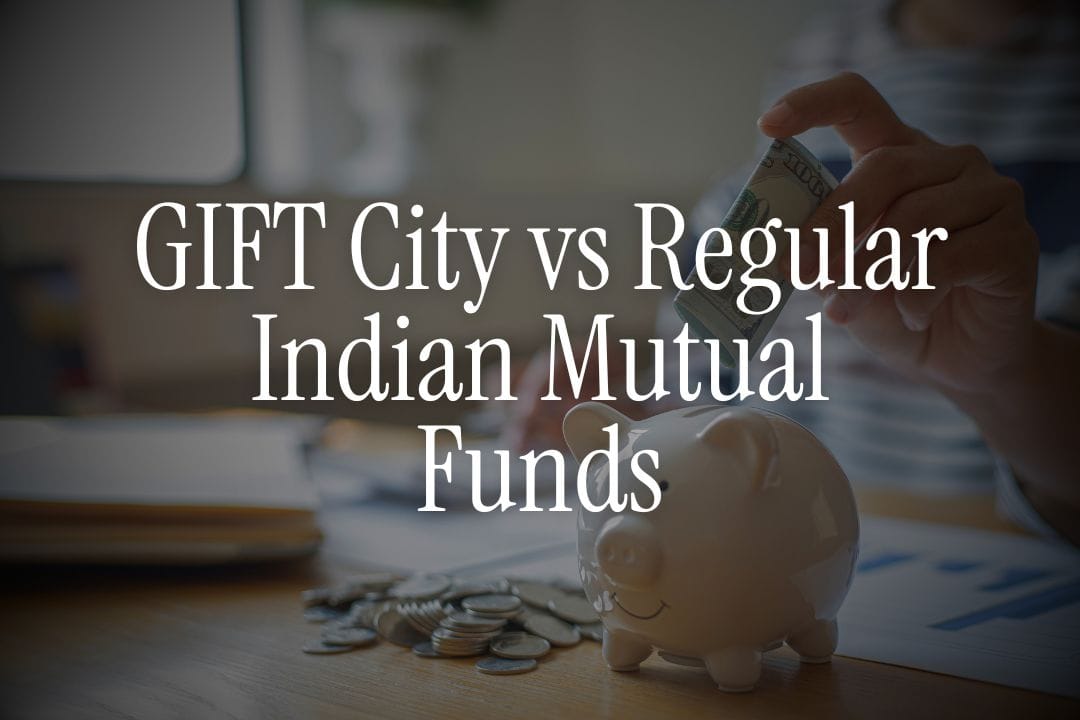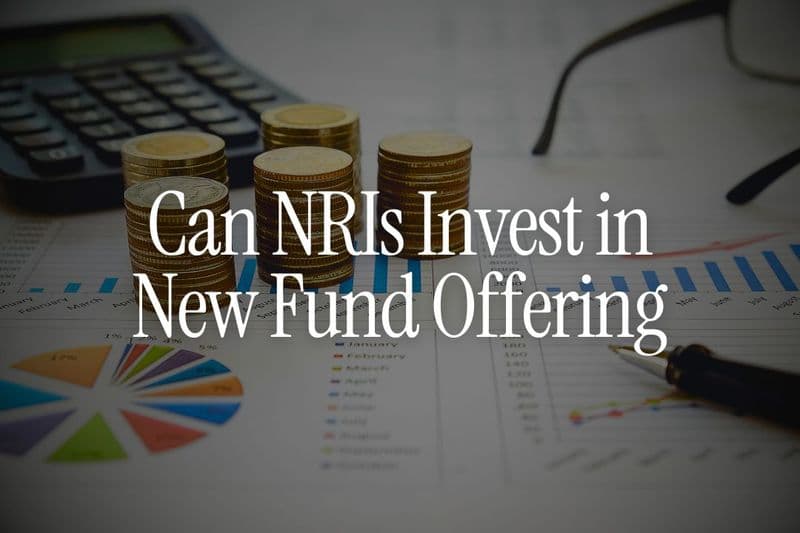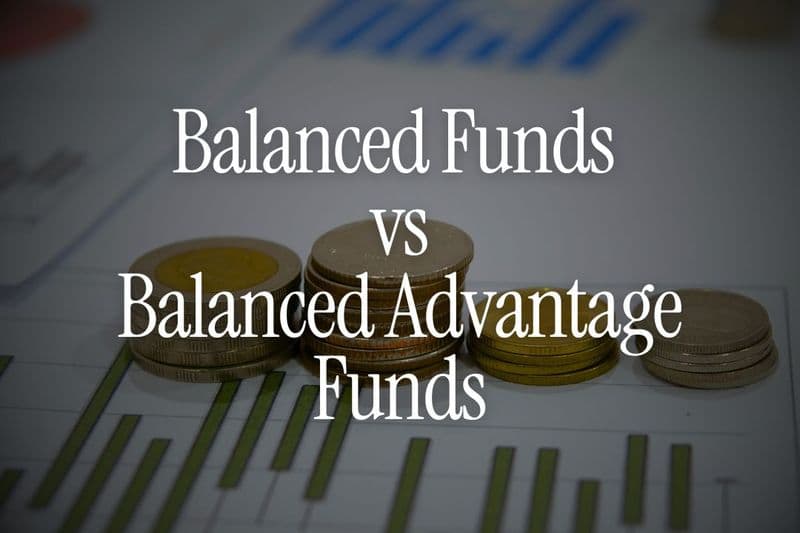
You've been sending money home for years. Maybe you've even opened an NRE or NRO account.
Now you're ready to invest in mutual funds from the UAE, but you keep hearing about two very different options: regular Indian mutual funds and GIFT City mutual funds.
Here's the confusion: both are regulated, both invest in markets, and both promise returns.
So why does one require just ₹500 while the other asks for $500? Why does one get taxed heavily while the other offers tax breaks?
At Belong, we've helped hundreds of NRIs navigate this exact decision.
After working with clients across Dubai, Abu Dhabi, and Sharjah, we've seen which option works for whom-and more importantly, which mistakes to avoid.
This guide will break down everything you need to know to make the right choice for your situation.
What Exactly Are GIFT City Mutual Funds?
GIFT City mutual funds are offshore funds launched by Asset Management Companies operating within India's first International Financial Services Centre (IFSC) in Gujarat's GIFT City.
These funds are regulated by the International Financial Services Centres Authority (IFSCA) and invest in both Indian and global markets, offering exposure to international securities such as equities and bonds.
Think of GIFT City as India's version of Singapore or Dubai's financial zones-a special economic zone with different rules, tax treatments, and investment structures.
Unlike traditional mutual funds in India which are bound by rupee-denominated regulations and complex cross-border restrictions, GIFT City offers mutual funds that are denominated in foreign currencies like USD, exempt from several Indian taxes, and fully repatriable.
GIFT City mutual funds are categorised into two categories: inbound and outbound funds based on their destination of investment. The inbound funds invest in Indian equities while the outbound funds invest in international equities.
Most GIFT City funds currently operate through the fund houses including Mirae Asset and Tata Asset Management are planning to launch retail schemes in GIFT IFSC to tap into NRIs and local individuals seeking overseas exposure.
👉 Tip: GIFT City funds give you access to international markets without leaving India's regulatory framework-perfect if you want global exposure but trust Indian institutions.
How Regular Indian Mutual Funds Work for NRIs
Regular Indian mutual funds are the ones you're probably more familiar with. These are schemes offered by AMCs like HDFC, ICICI Prudential, SBI, and others, regulated by SEBI (Securities and Exchange Board of India).
NRIs can invest in Indian mutual funds by updating their residency status, completing KYC formalities, and opening an NRE/NRO bank account. The process is straightforward, and you can invest amounts as small as ₹500.
These funds invest primarily in Indian stocks, bonds, and other domestic securities. They're denominated in Indian rupees, which means your returns depend not just on fund performance but also on INR-USD exchange rates.
Some AMCs restrict NRIs from the US and Canada from investing in Indian mutual fund schemes due to FATCA/CRS compliance requirements. However, for NRIs in the UAE, access is generally unrestricted across most fund houses.
The biggest appeal? Accessibility.
You can start with small amounts, set up systematic investment plans (SIPs), and gradually build wealth in India's growing economy.
The Currency Question: USD vs INR
This might be the most practical difference between the two options.
GIFT City funds are denominated in foreign currencies-primarily USD. This global currency denomination makes them more convenient for NRIs to invest without currency conversion hassles.
When you invest $10,000 in a GIFT City fund, you invest $10,000. Your returns come back in dollars.
Regular Indian mutual funds are rupee-denominated. You need to convert your dirhams or dollars to rupees first, invest, and then convert back when you redeem.
Let me show you why this matters with a real example:
Imagine you invested AED 50,000 (roughly $13,600) in an Indian equity fund in January 2020 when USD-INR was around ₹71. Your investment became ₹9,66,000.
Fast forward to October 2025. The fund grew 60% to ₹15,45,600. Great returns, right?
But when you convert back at today's rate (₹83.50 per dollar), you get $18,510-only a 36% return in dollar terms, not 60%. Currency depreciation ate 24% of your gains.
With GIFT City funds, your $13,600 investment growing 60% would give you $21,760. No currency surprise.
👉 Tip: If you're planning to stay in the UAE long-term or retire there, USD-denominated GIFT City investments protect you from rupee volatility.
Want to track how INR performs against the dollar? Use Belong's Rupee vs Dollar tracker to see historical trends and make informed decisions.
Tax Treatment: Where GIFT City Shines
This is where things get interesting-and where GIFT City funds offer significant advantages.
Taxation on Regular Indian Mutual Funds
Fund Type | Holding Period | Capital Gains Type | Capital Gains Tax Rate (Base) | TDS Rate under Section 195 | Exemptions/Notes |
|---|---|---|---|---|---|
Equity-Oriented (≥65% in Indian equity) | ≤12 months | Short-Term (STCG) | 20% | 20% (plus surcharge & 4% cess, ~20.80%) | No exemption. Rate increased from 15% to 20% (Finance Act, 2024). DTAA may lower rates with TRC and Form 10F. |
Equity-Oriented | >12 months | Long-Term (LTCG) | 12.5% | 12.5% (plus surcharge & 4% cess, ~12.95%) | No indexation. DTAA applicable. |
Debt/Non-Equity (includes hybrid \<65% equity, gold/international funds) | ≤24 months or any period (post-Apr 1, 2023) | Short-Term (STCG) | Slab rates (up to 30%) | Up to 30% (plus surcharge & 4% cess, ~31.20%) | No exemption. Taxed as ordinary income at slab rates. DTAA may apply. |
Debt/Non-Equity | >24 months | Long-Term (LTCG) | Slab rates (up to 30%) | 12.5% (plus surcharge & 4% cess, ~12.95%) | ₹4 lakh annual exemption (Budget 2025). Indexation removed (Finance Act, 2024; previously 20% with indexation). DTAA applicable. |
Dividends/IDCW (Equity or Debt) | N/A | Dividend Income | 20% | 20% (plus surcharge & 4% cess, ~20.80%) | No exemption. Subject to DTAA (e.g., 10-15% under India-US/UK treaties). |
Yes, you read that right-20% TDS gets deducted upfront, regardless of your actual tax liability. You can claim a refund when filing your Indian tax return, but that's extra paperwork and waiting time.
Taxation on GIFT City Mutual Funds
GIFT City's tax structure is designed to attract international investors.
They are taxed according to their destination of investing. The inbound funds investing in Indian equities are exempt from paying any taxes.
The outbound funds investing global equities are taxable. But there is no investor level tax or TDS deducted when the funds are redeemed.
An important point to note in the GIFT City mutual funds is that they are tax free in India but the investors might have to pay taxes according to the laws of their country of residence. For example- if the NRI is a resident of UAE, they might not have to pay any taxes. But if the NRI is a resident of Germany, they might have to pay taxes according to German laws.
Sources: Income Tax Act Sections 111A/112A/80LA/10(4D), IFSCA Fund Management Regulations 2022 (Amended 2025), IFSCA Bulletin Q1 2025, Finance Act 2025 Memorandum, Mint Analysis (Sep 2025), GIFT CFO Tax Benefits (Sep 2025)
👉 Tip: The tax savings from GIFT City funds can significantly boost your effective returns, especially for larger investments. Use our NRI Tax Filing guide to understand your complete tax picture.
Comparison Table: GIFT City vs Regular MFs
Here's a side-by-side comparison to help you see the key differences:
Feature | GIFT City Mutual Funds | Regular Indian Mutual Funds |
|---|---|---|
Regulator | IFSCA | SEBI |
Currency | USD primarily. | Indian Rupee (INR) |
Minimum Investment | $500 (depends on the fund) | ₹500 (varies by fund) |
TDS on Redemption | No TDS | Equity: 20% STCG, 12.5% LTCG; Debt: Slab rates (up to 30% post-Apr 2023) |
Capital Gains Tax | Tax free in India and taxed in the country of residence | 12.5% LTCG, 20% STCG (Up to 30% slab rate Irrespective of holding period for debt funds) |
Repatriation | Fully repatriable, no limits | Via NRE (unlimited) or NRO (up to $1M/year) |
FATCA/CRS Compliance | GIFT City MFs are not FATCA/CRS compliant by default. It varies by AMC. | Required, varies by AMC |
Global Market Access | It depends on the nature of scheme. Inbound fund invests via Indian equities and outbound funds invest in equities abroad. | Limited (mostly Indian markets) |
STT/GST | Exempt | Applicable |
Suitable For | High net-worth investors | All investors, small amounts ok |
US/Canada NRI Access | Generally restricted, some AMCs may allow | Generally restricted, some AMCs may allow |
Sources: ICICI Bank GIFT City, SEBI Regulations, Giftcfo.com - Tax Benefits
Minimum Investment: The Real Barrier
Let's address the elephant in the room.
Most GIFT City investment options, particularly MFs, require a minimum investment threshold of $150,000. That's roughly AED 550,000 or ₹1.25 crore.
This high entry point restricts accessibility for many NRIs. It's designed for high-net-worth individuals who have significant capital to deploy.
Regular Indian mutual funds, on the other hand, welcome investors with as little as ₹500. You can start a monthly SIP with ₹1,000 and gradually build your portfolio.
However, the landscape is changing. Multiple fund houses are working to launch retail schemes in GIFT IFSC specifically to attract NRIs and Indian investors, which would lower these minimums significantly.
New retail mutual fund schemes in GIFT City are available with minimums as low as $500.
👉 Tip: Don't let the high minimums discourage you. Build your wealth through regular mutual funds first, then graduate to GIFT City options as your portfolio grows.
Repatriation Rules: Moving Money Out
Repatriation-your ability to move money back out of India-is a crucial consideration.
Regular Indian Mutual Funds:
Investments via NRE accounts are fully repatriable, while investments via NRO accounts are repatriable up to USD 1 million per financial year.
This means if you invest through your NRE account (funded with foreign earnings), you can bring 100% of your returns back to the UAE without limits. Perfect for wealth you want to keep mobile.
If you invest through NRO accounts (funded with Indian income like rent), you hit the $1 million per year cap. For most people, this isn't a problem, but if you're dealing with large amounts, it requires planning.
Also Read -How to Repatriate Funds from an NRI Account to Abroad
GIFT City Funds:
GIFT City investments are fully repatriable, allowing you to withdraw your funds without currency control concerns. No paperwork, no limits, no RBI approval needed.
The money stays in your chosen foreign currency throughout, making international transfers simpler and faster.
Also Read -How to Repatriate Funds from NRO/NRE Accounts
Who Should Choose Which Option?
Let me break this down practically based on what we've seen working at Belong.
Choose Regular Indian Mutual Funds if:
- You're just starting your investment journey (under $50,000 to invest)
- You want to invest small amounts regularly through SIPs
- You believe in India's growth story and want direct exposure to Indian markets
- You're comfortable with rupee denomination
- You have someone in India who can help with paperwork if needed
- You're confident about INR appreciation (rare, but possible)
- You might return to India soon and will need rupees
Choose GIFT City Funds if:
You have $50,00+ to invest (current MF minimums)
You want to protect yourself from rupee depreciation
Tax efficiency is a priority (the TDS and GST exemptions matter)
You want international market exposure with Indian regulatory comfort
You're looking at long-term wealth preservation in foreign currency
You value simpler repatriation without RBI paperwork
You're building a global portfolio and want currency diversification
The Hybrid Approach (What We Recommend):
Most sophisticated NRI investors don't choose one or the other-they use both.
Allocate 60-70% to regular Indian equity and debt funds for:
- Market-linked growth
- Lower investment minimums
- Rupee exposure (some is good for India expenses)
- SIP discipline
Allocate 30-40% to GIFT City instruments for:
- Currency hedge
- Tax efficiency
- Global diversification
- Repatriation flexibility
This balanced approach gives you the best of both worlds while managing risks effectively.
👉 Tip: Not sure how to split your allocation? Join our WhatsApp community where NRIs share their portfolio strategies, or speak with our SEBI-registered advisors through the Belong app.
How to Invest: Process Comparison
Investing in Regular Indian Mutual Funds
Every NRI must follow three essential steps: open an NRE or NRO bank account, complete the KYC process with updated documentation, and choose a mutual fund platform.
Step 1: Open an NRI Account
You need either an NRE or NRO savings account.
Most NRIs in UAE use NRE accounts funded with foreign earnings. Check our guides on HDFC NRI accounts, ICICI NRI accounts, or SBI NRI accounts for specific bank processes.
Also Read -Documents Required for NRI Account Opening in India - Full Guide
Step 2: Complete KYC
Submit your self-attested passport, visa or OCI card, overseas address proof, and a recent photograph. Most banks now offer video KYC from the UAE, making this process entirely digital.
Step 3: Choose Investment Platform
You can invest directly through AMC websites, through your bank's investment portal, or via platforms that aggregate multiple fund houses. Most platforms support online investment from abroad.
Also Read - How NRIs Can Invest in Mutual Funds from Abroad
Step 4: Start Investing
Transfer money from your NRE/NRO account to the fund house, complete the application mentioning your NRI status, and you're done. SIPs can be set up for automated monthly investments.
Also Read -Best Mutual Funds for NRIs to Invest in India
Investing in GIFT City Funds
GIFT City onboarding is digital, but NRIs must comply with IFSCA and FEMA norms, requiring submission of similar documentation with additional FATCA and CRS declarations.
Unlike regular MFs where you can invest directly, GIFT City investments typically require working with a registered intermediary. Check our GIFT City Investment guide for detailed steps.
Step 1: Choose Your Platform
Unlike regular MFs where you can invest directly, GIFT City investments typically require working with a registered intermediary. Check our GIFT City Investment guide for detailed steps.
Step 2: Open a GIFT City Account
You can open Global Savings Accounts in various foreign currencies at GIFT City, including USD, GBP, EUR, CAD, AED, AUD, SGD, and HKD. This becomes your operating account for all GIFT City investments.
Step 3: Complete Enhanced KYC
Similar documents as regular funds, plus:
FATCA self-certification (if the NRI is US and Canada based)
Step 4: Choose Your Mutual Fund
You can choose between the inbound and outbound fund based on your investment strategy.
Step 5: Transfer Funds and Invest
Wire transfer from your UAE bank account in USD (or other accepted currency) to your MF distributor , then allocate to your chosen fund. Minimum processing time is typically 7-10 business days.
👉 Tip: GIFT City investments involve more paperwork initially, but the tax benefits and currency protection make it worthwhile for larger amounts. Our team at Belong can help navigate the documentation.
DTAA Benefits: Avoiding Double Taxation
Both types of investments benefit from India's Double Taxation Avoidance Agreements (DTAA), but the mechanics differ.
India has DTAA treaties with over 90 countries. By submitting a Tax Residency Certificate (TRC), you can either claim credit for the tax paid in India against your tax liability in your country of residence, or be subject to a lower TDS rate in India as per the treaty.
For UAE-based NRIs, this is particularly beneficial since the UAE-India DTAA provides favorable treatment on capital gains and interest income.
For Regular Mutual Funds:
You'll need to:
- File for a TRC from UAE authorities
- Claim the DTAA benefit in your Indian tax return
- Show proof of taxes paid in India when filing UAE returns (if applicable)
For GIFT City Funds:
The DTAA benefits are often built into the structure since GIFT City itself offers concessional tax rates. However, you still need to track and report as per your resident country's requirements.
Want to learn more about claiming DTAA benefits? Check our comprehensive guide on DTAA for NRIs.
Common Mistakes NRIs Make (And How to Avoid Them)
After years of helping NRI investors, we've seen these mistakes repeatedly:
Mistake 1: Not Updating Residential Status
Many NRIs continue using their old resident Indian mutual fund accounts after moving abroad. This creates tax complications and potential FEMA violations. Update your status immediately after becoming an NRI. Learn how to convert resident accounts to NRI accounts.
Mistake 2: Ignoring Currency Impact
Investing in rupee funds without considering currency depreciation can erode 2-3% of your returns annually. Always factor in currency trends. Track them on our INR vs USD dashboard.
Mistake 3: Not Claiming DTAA Benefits
Many NRIs pay 20% TDS in India without claiming DTAA benefits, losing thousands in unnecessary taxes. File your TRC application early.
Mistake 4: Overlooking GIFT City for Large Investments
NRIs park ₹50 lakh+ in regular mutual funds without exploring GIFT City options, missing out on significant tax savings. For amounts above $150,000, at least evaluate GIFT City alternatives.
Mistake 5: Not Diversifying Between Both
Going 100% into either option creates concentration risk. Balance between both for optimal risk-adjusted returns.
Mistake 6: Forgetting About Repatriation Limits
Investing through NRO accounts without tracking the $1 million annual repatriation limit can create liquidity issues. Plan your account structure carefully based on our NRO and NRE account comparison.
Real Scenarios: Which Works Better When
Let me share some real scenarios (names changed) from our client base:
Scenario 1: Priya, 32, Marketing Manager in Dubai
- Investment capacity: AED 3,000/month (₹70,000)
- Horizon: 15+ years
- Plans: Might return to India
Recommendation: Regular Indian mutual funds via SIP
- Start with 60% equity funds (large-cap + flexi-cap)
- 30% hybrid funds
- 10% debt funds
Why: NRIs investing solely in GIFT City mutual funds can avoid individual Indian tax-return filing and PAN requirements in certain cases.
Scenario 2: Rajesh, 45, Senior Manager in Abu Dhabi
- Investment capacity: $100,000 lumpsum + $2,000/month
- Horizon: 10 years until retirement
- Plans: Retire in UAE or US
Recommendation: Hybrid approach
- 40% in GIFT City funds (once he accumulates $150K)
- 40% in regular Indian equity/hybrid funds via SIP
- 20% in GIFT City FDs (for stable dollar returns)
Why: Large corpus justifies GIFT City entry, dollar denomination aligns with retirement plans abroad, tax efficiency matters at his income level. See GIFT City FD rates for current offerings.
Scenario 3: Sunita, 38, Doctor in Sharjah
- Investment capacity: $200,000 lumpsum from property sale
- Horizon: 5-7 years (daughter's education)
- Plans: Education might be in US or India
Recommendation: Primarily GIFT City
- 70% in GIFT City hybrid AIFs (mix of global equity and debt)
- 30% in liquid GIFT City options or short-term funds
Why: Large lumpsum, short-to-medium horizon, dollar stability crucial for predictable education planning, wants to avoid rupee depreciation risk.
👉 Tip: Your optimal strategy depends on your specific situation. Use our Compliance Compass to check if you're meeting all NRI investment requirements, then design your portfolio accordingly.
Tax Filing Implications
Both investment types create tax filing obligations, but they differ:
For Regular Mutual Funds
Capital gains from mutual funds are taxable in India and must be reported in your ITR (Income Tax Return), even if you're an NRI with no other Indian income.
You need to file ITR-2 if you have capital gains. TDS gets deducted at source, but you must reconcile this in your return and claim refunds if applicable.
Most NRIs make common tax filing mistakes like missing deadlines, not claiming DTAA benefits, or failing to report all investments. Our NRI tax filing guide covers everything you need.
For GIFT City Funds
NRIs investing solely through Category I/II AIFs in GIFT City can avoid individual Indian tax-return filing and PAN requirements in certain cases.
The fund itself handles taxation at the fund level, simplifying compliance. However, you must still report these investments in your resident country's tax return.
For UAE residents, since there's no personal income tax, this is straightforward-just maintain records. For US/UK/Canada-based NRIs, proper reporting in home country returns is mandatory.
Also Read - Taxation on Mutual Funds
Investment Costs and Fees Comparison
Understanding the fee structure helps you calculate actual returns.
Regular Indian Mutual Funds
Expense Ratio: Ranges from 0.5% (index funds) to 2.5% (actively managed equity funds)
Entry Load: Abolished since 2009-zero entry fees
Exit Load: Usually 1% if you redeem within 1 year, then zero
Other Costs:
- STT (Securities Transaction Tax): 0.001% on redemption
- GST on expense ratio: 18% (included in the expense ratio)
- Fund switching charges: Vary by AMC
Total annual cost impact: 0.8% to 2.5% depending on fund type.
GIFT City Funds
Management Fees: 1.5% to 3% for MFs
Other Costs:
- Zero STT (exempted)
- Zero GST (exempted)
- Custodian and admin fees: Built into management fee
Total annual cost impact: 2% to 3.5%, BUT with tax savings that can offset these costs.
Example: If you're saving 8-10% on taxes through GIFT City structure, a 1% higher fee still leaves you ahead by 7-9%.
Liquidity Considerations
How quickly can you access your money?
Regular Indian Mutual Funds:
Most open-ended funds offer same-day or T+1 liquidity. You can redeem today, and money hits your account within 1-3 business days. This is excellent for emergency needs.
However, some schemes like ELSS (Equity Linked Savings Schemes) have a mandatory lock-in period of three years.
GIFT City Mutual Funds:
GIFT City MFs can be redeemed when needed. There is no TDS deducted on redemption. However, getting the funds to your bank account might take longer since they involve international money movement.
Future Outlook: What's Changing
The GIFT City ecosystem is evolving rapidly:
At least five mutual fund houses are planning to launch retail schemes in GIFT IFSC in the coming months.
This democratization would make GIFT City accessible to middle-income NRIs, not just HNIs. We're actively tracking these developments at Belong to notify our community first.
The Indian government is also pushing GIFT City aggressively as part of its plan to make it a global financial hub comparable to Singapore or Dubai. Expect more product innovation, better infrastructure, and potentially even better tax incentives.
What About US-Based NRIs?
If you're reading this from the US, you face unique challenges.
Most Indian mutual funds are considered PFICs under US tax law. Each PFIC holding requires annual Form 8621 filings, and you're taxed on notional unrealized gains, even if you haven't sold-making regular Indian mutual funds extremely tax-inefficient for US persons.
Many US-based NRIs avoid Indian mutual funds entirely because of PFIC complications and instead prefer:
- Direct equity investments (not PFICs)
- US-based India ETFs
For detailed US tax implications, consult a cross-border tax advisor. Our US-India DTAA guide provides a starting point.
Also Read -RBI's New Rules for Investment - What Every NRI Must Know
Alternative Options to Consider
Beyond mutual funds, NRIs have other investment choices worth comparing:
Fixed Deposits
Both regular NRE/NRO FDs and GIFT City FDs offer guaranteed returns with zero market risk. FDs are ideal for conservative investors or for parking money short-term. Compare rates on our FD comparison tool.
Direct Equity
Investing directly in stocks via Demat accounts gives you more control but requires research and active management. Suitable if you have time and expertise.
Alternative Investment Funds
Beyond mutual funds, GIFT City AIFs offer exposure to real estate, private equity, hedge funds, and more. Higher risk but potentially higher returns.
Real Estate
Property investment in India has different dynamics. Our guide on real estate rules for NRIs explains regulations and tax implications.
Portfolio Management Services
PMS platforms offer personalized portfolio management with minimum investments typically starting at ₹50 lakh. It's a middle ground between DIY and funds.
Key Takeaways
Let me summarize everything into actionable insights:
For Investors Under $100K: Focus on regular Indian mutual funds. Build through SIPs. Diversify across equity, debt, and hybrid funds. Track currency trends but don't obsess over them. Your time horizon and rupee cost averaging will handle volatility.
For Investors $100K-$300K: Start transitioning to a hybrid model. Keep 60-70% in regular funds for liquidity and accessibility. Use 30-40% for GIFT City entry once you hit the minimums. This balances growth with tax efficiency.
For Investors Above $300K: GIFT City could be your primary vehicle. Please check with a financial advisor though. Use regular funds only for tactical allocation, emergency liquidity, or systematic deployment of future income. Tax efficiency and currency protection become paramount at this level.
Regardless of Amount:
- Complete proper KYC and update residential status
- Maintain both NRE and NRO accounts for flexibility
- File taxes diligently in both India and resident country
- Review portfolio annually as regulations evolve
- Stay connected with a community that understands NRI challenges
The Belong Advantage
At Belong, we've built a platform specifically for NRIs who are tired of juggling multiple banks, confusing tax rules, and currency headaches.
Our GIFT City investment platform offers:
- USD fixed deposits with tax-free returns starting at $1,000 (not $150,000)
- Mutual fund investing starting at $500
- Digital KYC from anywhere in the UAE
- Transparent fee structure with no hidden charges
- Community of 5,000+ NRIs sharing real experiences
We're not trying to replace your existing mutual fund investments. We're adding the GIFT City option to your toolkit, making it accessible without the usual barriers.
Beyond GIFT City, we offer:
- FD rate comparison across banks
- Residential status calculator for tax planning
- Compliance tracker to ensure you're meeting all NRI requirements
- Daily market insights via our WhatsApp community
Your Next Steps
If you're ready to make smarter investment decisions:
Step 1: Assess your current situation
- How much can you invest?
- What's your time horizon?
- Where will you retire?
- What's your risk appetite?
Step 2: Join our community Our WhatsApp community has NRIs from Dubai, Abu Dhabi, Sharjah, and across UAE sharing strategies, asking questions, and learning together. No sales pitch-just genuine peer support and expert insights.
Step 3: Start with what you can. Don't wait for perfect knowledge or large amounts. Start small with regular mutual funds if that's where you are, or explore GIFT City if you have the capital. The important thing is to start.
Step 4: Download Belong Get the Belong app to access our investment tools, track your portfolio, and get personalized recommendations based on your profile.
Sources & References:
- RBI Guidelines on NRI Investments
- SEBI Mutual Fund Regulations
- IFSCA Framework
- Income Tax Act
- ICICI Bank GIFT City
- SEBI NRI Ownership Rules
- Budget 2025 Tax Changes
- US PFIC Taxation
Disclaimer: This article is for educational purposes only and should not be considered as financial advice. Investment decisions should be made after consulting with a qualified financial advisor who understands your complete financial situation. Past performance does not guarantee future results. Investments are subject to market risks.




